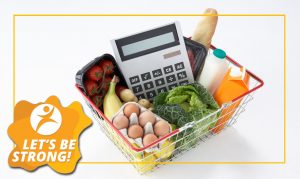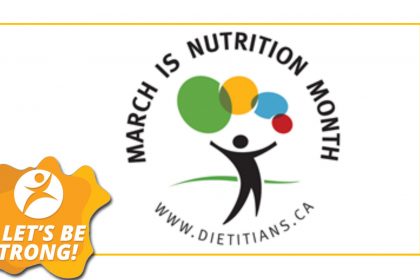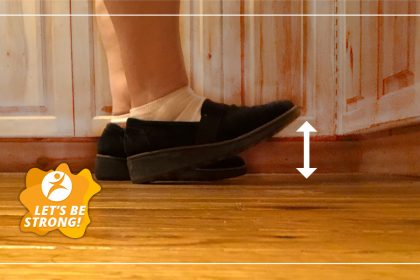
You may think that ‘healthy eating’ and ‘budget’ are two words that can’t go together, however this is not the case! With just a little planning and effort, you can enjoy a variety of healthy foods without breaking the bank. Here are some tips and tricks that can help you eat well on a budget.
Set a budget.
- Planning your meals and grocery lists around your budget helps you think ahead of time.
Make a list, stick to it.
- Helps you avoid any impulse buys.
Look for sales.
- Use flyers, coupons, grocery websites and apps to find foods on your list that might be on sale.
- Plan some of your meals around sale items.
- Discounted items close to their best before dates are good options if you can use them up quickly.
Compare prices.
- No name brands are typically cheaper than brand name products.
- Use flyers to price match products on sale.
- Scan the top and bottom areas of grocery shelves as this is often where the more inexpensive products are.
- Items in bulk are less expensive than single-serving packaging.
Stock up.
- Stock up on canned items and staples you know you’ll use when they are on sale.
Extend the shelf life.
- Food that is nearing its best before date can be frozen to make the shelf life longer. These include:
- Lean meats or poultry.
- Fruits and vegetables.
- Whole grain bread.
- This saves money and reduces waste.
What’s the season?
- Fresh fruits and vegetables are more affordable when they are in season.
- E.g. berries are less expensive in the summer.
- Frozen and canned fruits and vegetables are usually less expensive than fresh.
- Good options for when produce is out of season, or even in season.
- Frozen produce is just as healthy as fresh.
- Choose canned items low in sodium and rinse canned vegetables.
Choose plant-based proteins more often.
- Beans, lentils and legumes are inexpensive protein foods.
- Incorporate these into your meals several times a week.
- Low in saturated fat.
- Dried beans and lentils are the most cost-efficient.
- Allow time to soak beans in water before cooking with them.
Choose less processed foods.
- Highly processed foods such as cookies, chips, sugary drinks, and processed meats are less nutritious and more expensive.
- Usually, the more processed or prepared something is, the more expensive it is.
- E.g. grated cheese is more expensive than a block of cheese.
- Prepare these foods at home.
Explore grocery stores.
- Shop at discount grocery stores, such as Food Basics.
- Convenience stores are typically more expensive.
- Ask if your grocery store has a seniors or discount day.
- Take a taxi with a friend and split the cost.
Best buys for each food group:
- Fruits and vegetables
- Staples such as carrots, potatoes, oranges, bananas, onions.
- Frozen or canned options.
- Protein
- Dried or canned beans, peas or lentils.
- Canned fish.
- Less expensive cuts of meat such as stewing, blade or flank, pork shoulder.
- Tofu, eggs.
- Powdered milk.
- Bagged milk is cheaper than milk in cartons, can freeze the bags if you won’t use by best before date.
- Block cheese and yogurt in tubs.
- Grain products
- Dry whole grain pasta.
- Parboiled or brown rice.
- Whole grain bread.
- Hot cereals such as oatmeal or creamed wheat.
For additional resources on healthy eating, check out Stay on Your Feet’s Healthy Aging Toolkit.








